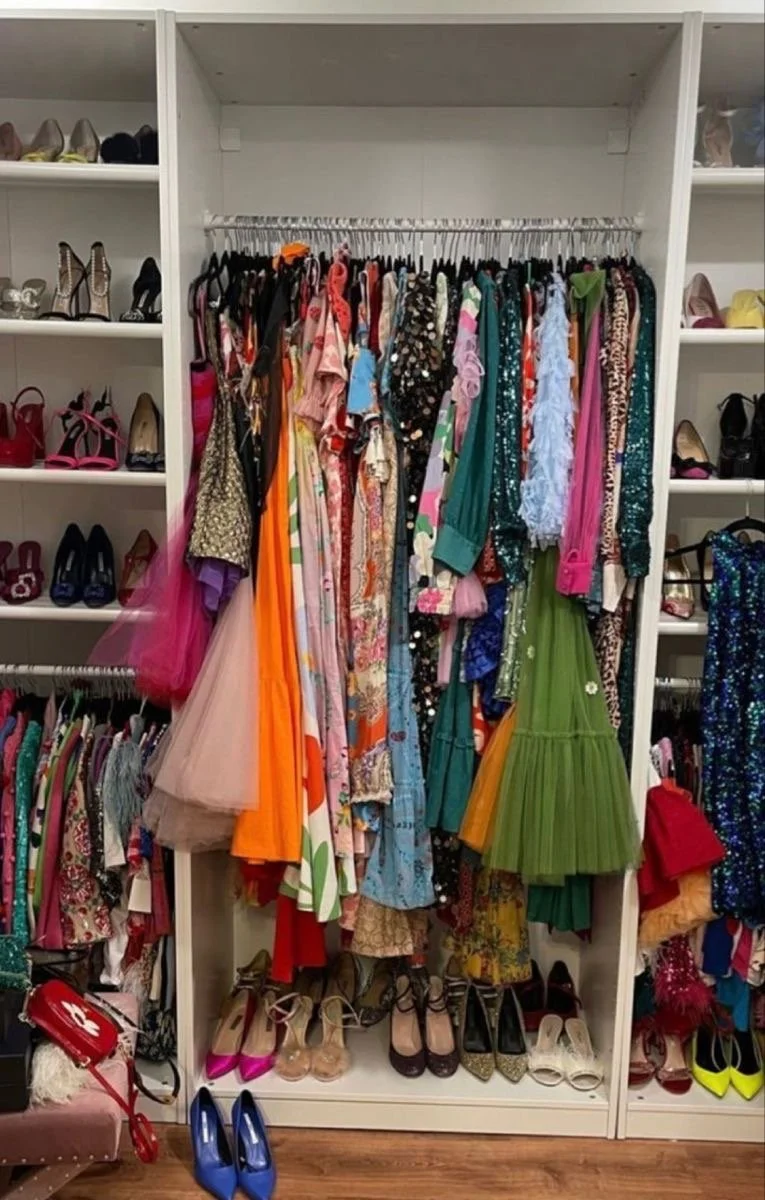Fashion is Temporary, Style is Forever
By CG Morand
A pair of heels sits idling in a store window, daring someone to notice their satin magenta, with a crystal embellishment perched on the toe. The next moment, a certain blonde, curly-haired woman steps out of the store, adorning said shoes. It’s none other than Carrie Bradshaw, parading around in her signature Manolo Blahniks.
The tangible interactions with a pair of shoes, a piece of clothing, produce at the grocery store, or one’s coffee order are all a reflection of taste—what draws someone in, or makes them instinctively avoid it. Life itself is an act of curation.
From playlists to profiles, curating weaves its way into the fabric of our everyday lives. And while curation is not exclusively modern, modernity has played a critical role in how curation has developed into something of an obsession. Think TikTok trends such as Coastal Grandmother, Dark Academia, or The Clean Girl, in which each aesthetic has a signature color, look, and feel to it.
However, these aesthetics only offer an illusion of identity. They are not an authentic depiction of one’s own lived experiences, because how is it possible to be a Coastal Grandmother at the age of 17?
Bradshaw is not buying $800 shoes to look like everyone else. She is investing in herself rather than investing in an extension of herself that only exists in a box. She is not subscribing to an aesthetic, but is building her own through her experiences, her relationships, and her being unable to help but wonder…
Still from Sex and the City
This is a crucial element of what makes Bradshaw the fashion and pop-culture icon we know and love today. She doesn’t merely wear fashion, she lives it. She builds outfits that shape a narrative of her life, rather than her life being dictated by certain garments.
Some may say that is the point of fashion: constructing outfits that are as much alive as the person wearing them. However, it is actually the art of cultivating a personal style. Style is the ever-evolving runway where inclination meets identity. It is something developed over time, as it takes time to get to know oneself. As the lessons learned and hearts broken course through us, pulsing through every decision, every silhouette, and every shade.
Though due to the fast-paced landscape of social media, with a new fashion fad torpedoing its way across our screens every hour, comes the attempt to shortcut one’s way to selfhood. The result is compacting into a box that continues to brim with new claw clips, clothes, or cosmetics in earnest to imitate an aesthetic mistaken for self-identity.
This is not to say that nobody should have the same thing or have common interests. Community is a vital part of the human experience, which is stitched together through common interests, and yes, clothes and accessories. Trends are also turned out in response to a broader systemic outcry—they themselves reflect a society, and what is happening politically and socioeconomically.
Image Sourced through Pinterest
During the counterculture movement of the 1960s, hidden behind hippies dressed in denim and bold, eclectic patterns was the broader message of an anti-establishment sentiment. Or in the 1980s, where neon colors, loud accessories, and padded shoulders to the Nth degree were the debut of the modern and independent working woman.
The issue arises when trends are mistaken for an extension of the self—a self that has no real attachment to a certain aesthetic outside of it trending. Someone who buys $800 shoes with the sole purpose of fitting into an aesthetic, only to toss them out with the next trend cycle.
The result is a less thoughtful person; someone who only dresses and caters to a certain aesthetic but does not actually engage with it in a meaningful way. This leads to more surface-level interactions and conversations, thereby limiting the connection we could have with people, but instead continuing to sit in our echo chambers.
While it seems that social media is constantly pushing us to conform to a certain aesthetic, it is essential to remember that the most meaningful fashion does not come prepackaged with a set of color palettes and rules. Style grows right alongside us, as we rearrange our lives and play the long game of getting to know ourselves; our closets shapeshift as well.
Bradshaw is shaping trends, showing us that the most important thing we can do when picking out an outfit is to dress to tell our own story. Because having style is not just about clothes, it is how we wear our experiences and our mistakes. After all, it is not the heels that define us; it is the way we walk in them.
Still from Sex and the City



